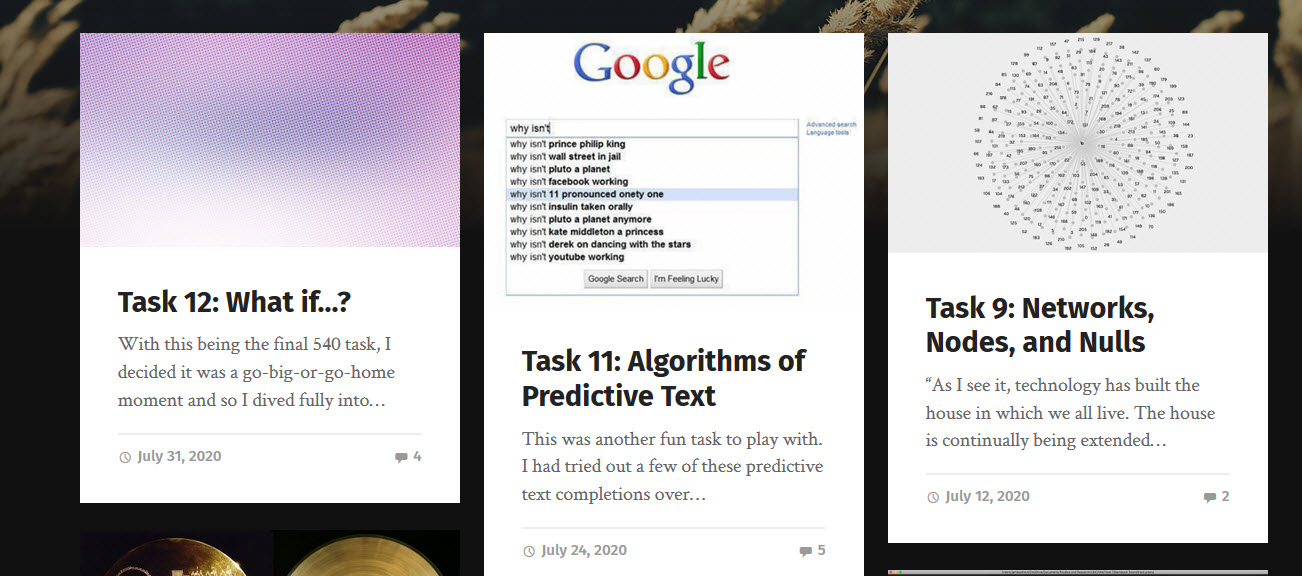Jamie has such a unique interface and design on her blog site that one is immediately drawn in to want to start exploring her space. On the site home page, which feels almost futuristic she has utilized a completely different design to any other blog site I have seen in the course. She has made use of visual “cards” to display her individual posts, that give a quick view of the content that the post will contain and is visually inviting to the reader of her site- you get to pick from the onset what post looks like it might be interesting to you. They act almost as little teasers of what’s to come and I love looking at these cards. Most of my peers, including myself, make use of a scrolling main home page.

Once a post has been selected on Jamie’s site, you are taken to that post and all other menus disappear from view. Instead your mode of navigation to other posts becomes the arrows positioned at either end of the post or by clicking on her page name to go back to the main page. Additionally you could also go to the linking assignment from within a post. In that regard, the navigation feels a little more restricted than the open flow of my own blog design that allows movement between categories a little more effortlessly.
For my fifth linking assignment post I chose to compare our submissions for Task 11. I love that Jamie always gives her readers a well-curated experience of the topic at hand each week in her posts. She never has a post without additional resources available to us all to extend the discussion points of the week with Task 11 not being any different. In this task, we both ended up taking on small experiments with predictive text and ended up with very similar conclusions drawn at the end. She made use of WhatsApp and Facebook to test whether the use of these technologies would have influenced the predictive text options given for the same questions where as my own experiment involved changing the language on my phone and testing whether any sensible message could be constructed without me knowing what I was selecting. I think we both were slightly disturbed and upset by the results of our experiments.
Absolutely it was possible to construct some message with these technologies but what they lacked was our own voices in those messages. Taking away our choice had robbed us both of feeling as if there was any realness in the messages created and they could in no way truly represent us. We both clearly share similar concerns for a future in which algorithms such as those used in predictive text software limits our choices and continually prevents us from expressing our individuality. The implications of a world in which humans cannot freely express themselves seems bizarre right now but that might change in the next decade or so (given how fast technology is evolving). I hope that as more people become aware of the trade-offs being made between convenience and individuality that we will consider more closely the use of algorithms and the implications of entwining them with our daily lives so extensively.